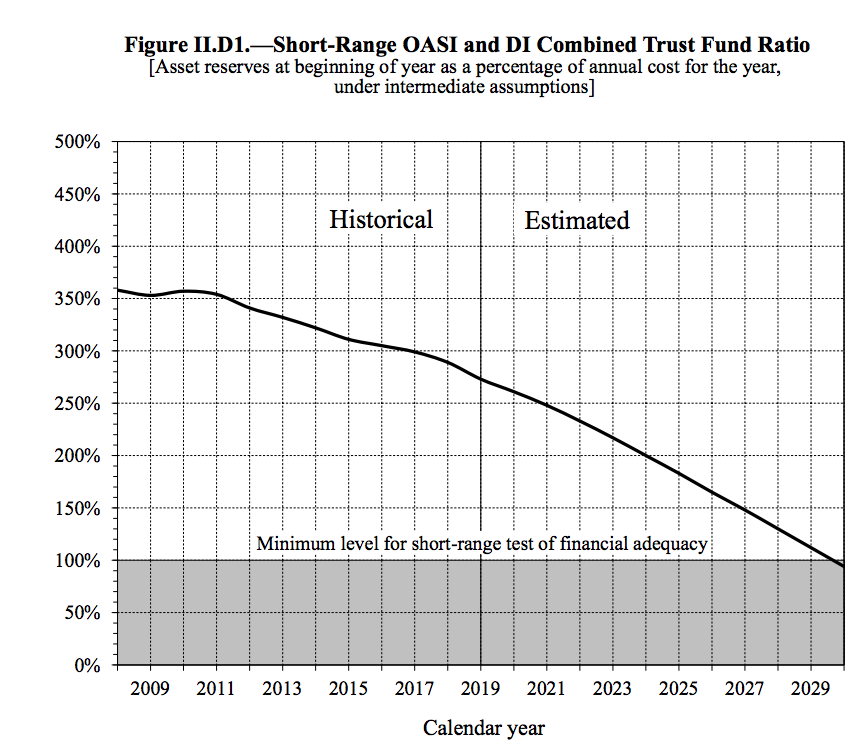Today, the Trustees of the Social Security and Medicare trust funds released their 2020 report on the financial status of both programs (report, summary). The numbers don’t look good. I say this noting also that the projections do not take into account any impacts on mortality, health care costs and taxes revenue from COVID-19. Thus, one could consider these Trustees report projections optimistic. Regardless, here is where we stand:
Social security trust fund will run out of funds in 15 years. The Old-Age and Survivors Insurance (OASI) Trust Fund can pay scheduled benefits on a timely basis until 2034. Starting in 2035, incoming tax revenue will only be able to pay for 76% of scheduled benefits.
Social Security finances are getting worse. With the baby boomers retiring, Social Security’s financial situation is projected to worsen. In the next decade, deficits will be $2 trillion, equivalent of 0.7% percent of Gross Domestic Product (GDP). Deficits will exceed 1.2% percent of GDP by 2040 and 1.5% percent of GDP by 2094.
Medicare Trust Fund will be exhausted in 7 years. Medicare’s Hospital Insurance (HI) Trust Fund, which pays Medicare Part A inpatient hospital expenses will be able to pay scheduled benefits until 2026, the same as reported last year. Starting in 2027 (in just 7 years!) continuing program income will be sufficient to pay only 90% of scheduled benefits. Part B benefits, however, are fully financed as Medicare requires that beneficiary premiums each year are set to meet the next year’s expected Part B costs.
Social security and Medicare make up more than 2 out of every 5 dollars of federal spending. These two programs alone accounted for 41% of federal expenditures in FY 2019.
As the Committee for Responsible Federal Budget stated, “Time is running out to save Social Security.”

2 Comments